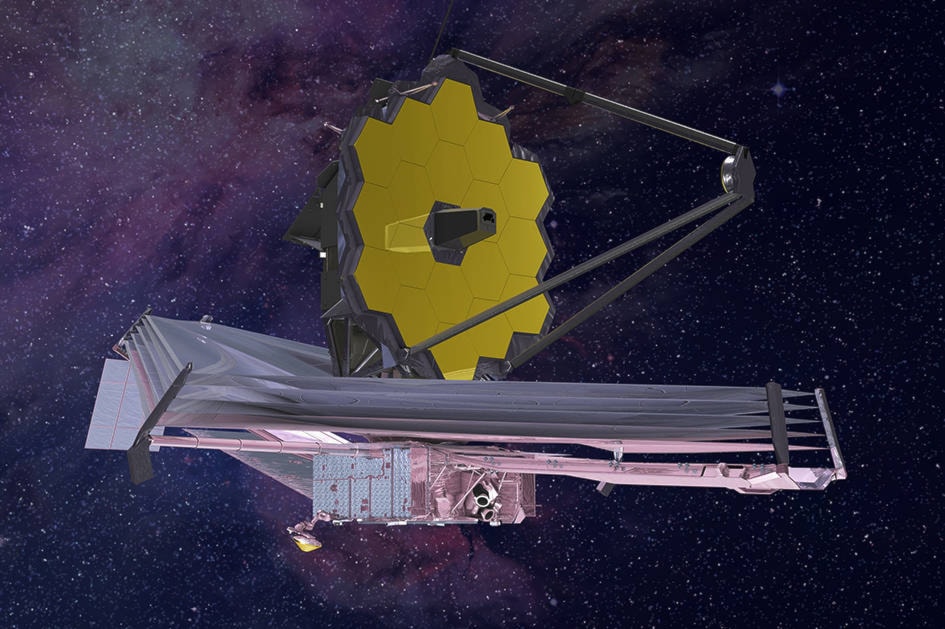A guest speaker for Nanaimo Astronomy Society’s next meeting will describe what makes astronomers see red and why that can be a good thing.
Chris Willott, a senior research officer at the National Research Council’s Dominion Astrophysical Observatory in Victoria, will be the society’s virtual guest Thursday, March 25. Willott, project scientist with the James Webb Space Telescope, will discuss what the telescope might reveal by looking back at the universe’s first light-emitting objects and how the telescope’s Canadian technology can help scan for signs of life on planets in far-off solar systems.
“I’m an astronomer by training. I’m not an engineer, so I don’t build parts of telescopes. I’m a user of telescopes,” Willott said. “I provide scientific oversight to the engineers and the people designing the telescope about how the telescope will be used to make sure that everything’s designed in a way that’s going to make the telescope efficient, operate well and be able to meet the science goals that were set out when the idea first originated.”
The JWST, scheduled for launch in October, is an infrared observatory that is a joint effort by NASA, the European Space Agency and the Canadian Space Agency. With its 6.5-metre primary mirror, it will be the largest and most sophisticated space telescope launched to date and will augment discoveries made by the Hubble Space Telescope and ultimately take over from the Hubble, which has been operating for more than 30 years. Northrop Grumman is the main industrial partner, according to NASA’s JWST information webpage. NASA’s Goddard Space Flight Centre in Greenbelt, Md., is handling its development. Willott has been with the JWST program since 2006.
Canada has contributed the telescope’s guidance and orientation system and the near-infrared imager and slitless spectrograph, the system that will detect the universe’s first light, find exoplanets and measure the chemical composition of their atmospheres.
One way astronomers can measure how far a distant galaxy is from Earth is due to the red-shift effect, so the telescope’s instruments are tuned to infrared light, the portion of the light spectrum that will allow it to effectively peer nearly 13 billion years into the past.
“The infrared’s very important there, because as you look farther away then the light gets red-shifted, so what was optical radiation in the early universe gets red-shifted by the time it reaches us,” Willott said.
READ ALSO: Astronomer from Nanaimo part of exciting discoveries at Hawaii observatories
The universe in its early days was much smaller with its matter more densely packed. Where ordered spiral and elliptical galaxies exist today, early galaxies were random-shaped and smaller. Willott said astronomers have some idea what they will see looking back billions of years, but other questions remain unanswered.
“The first stars that formed in the universe, were they stars that were similar to our Sun?” Willott asked. “Some people think they may have actually been much, much larger and you could create stars with a mass of 100 times our Sun back in the early universe, but you can’t create such stars very efficiently now.”
There are modern applications for the methods used to glean information from the universe’s early days.
“We’ve discovered, in the last 25 years, thousands of planets around other stars, but we don’t know very much about them yet,” Willott said. “With this telescope we’re going to be able to measure the chemical composition in the atmospheres of some of these planets … By studying the chemical compositions of these planets we’ll be able to see the kinds of environments that exist in other places in our galaxy and potentially – although it’s not a sure thing that will be able to see it – is, actually, signature of biological life on other planets.”
Nanaimo Astronomy Society’s next meeting happens 7-8:15 p.m. on March 25. Current society meetings are online. To learn more about how to take part in meetings, costs to become a society member to take part in meetings and other information, visit the NAS website at www.nanaimoastronomy.com.
photos@nanaimobulletin.com
Like us on Facebook and follow us on Twitter
